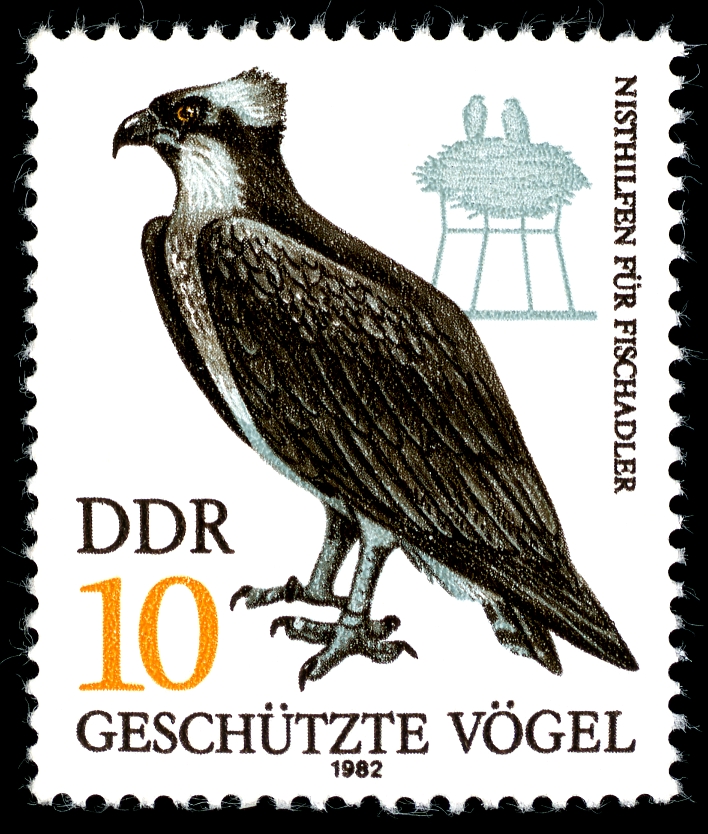|
| Query: First bird | Result: 1012th of 1074 | |
osprey, fish eagle (Pandion haliaetus)
| Subject: | osprey, fish eagle (Pandion haliaetus)
| | Poster: | Wiki Photos (---@---.---)
| |

| Resolution: 708x834
File Size: 367842 Bytes
Upload Date: 2017:03:15 16:58:41
|
Information: Geschützte Greifvögel: Fischadler (Pandion haliaetus)
Ausgabepreis: 10 Pfennig
First Day of Issue / Erstausgabetag: 18. Mai 1982
Auflage: 16.000.000
Entwurf: Hillmar Zill
Druckverfahren: Rastertiefdruck
Michel-Katalog-Nr: Ländercode-MiNr: 2702
Date Bearbeitung Frühjahr 2010
Source Eigener Scan
Source: https://commons.wikimedia.org/wiki/File:Stamps_of_Germany_(DDR)_1982,_MiNr_2702.jpg
The osprey (Pandion haliaetus)—also called fish eagle, sea hawk, river hawk, and fish hawk—is a diurnal, fish-eating bird of prey with a cosmopolitan range. As its other common names suggest, the osprey's diet consists almost exclusively of fish. |
^o^
Animal Pictures Archive for smart phones
^o^
|
|